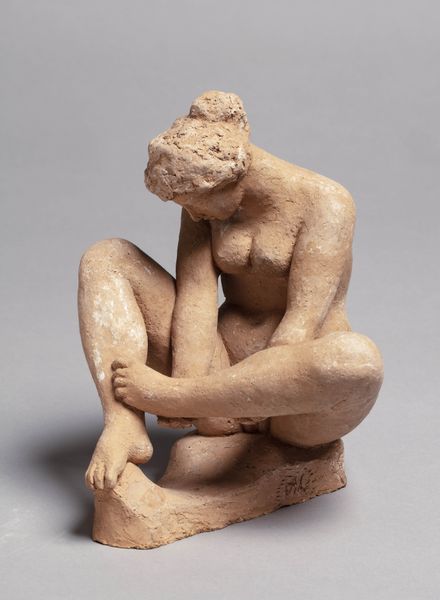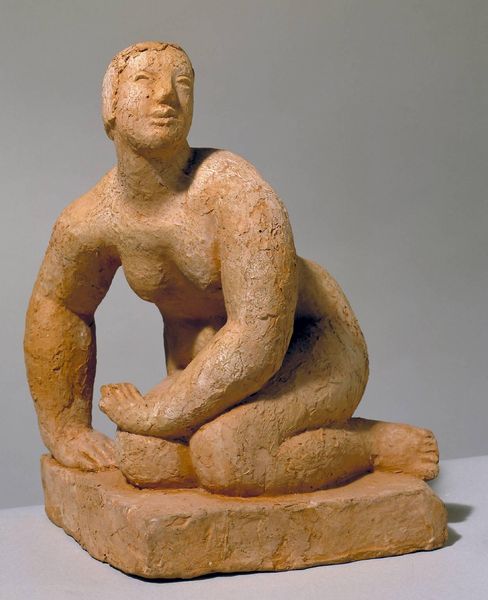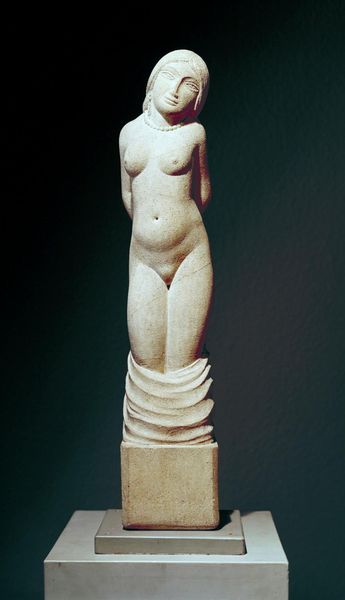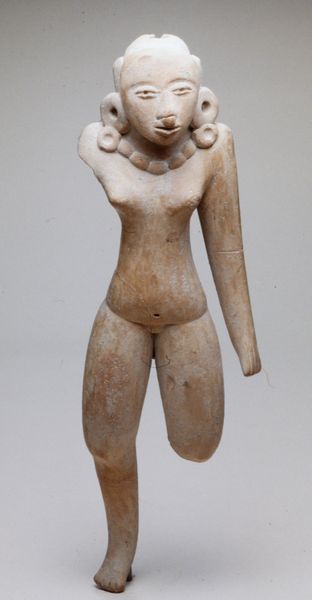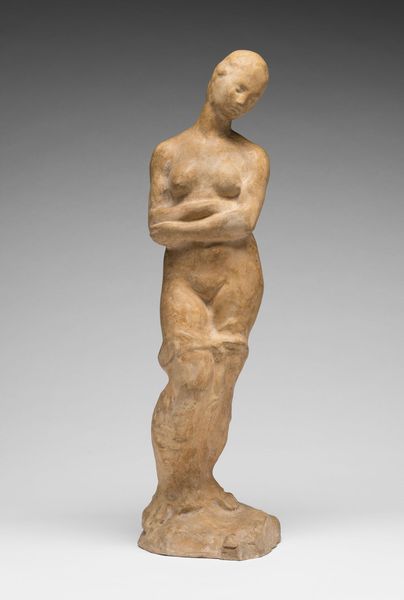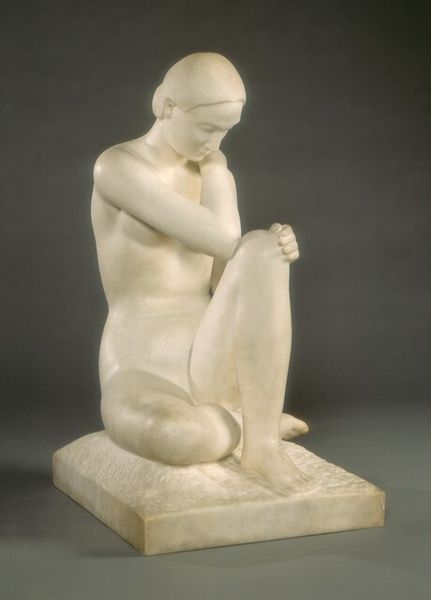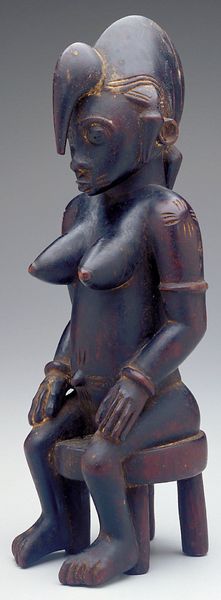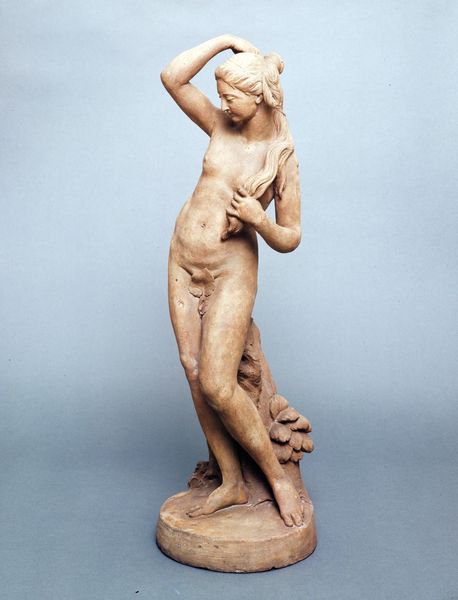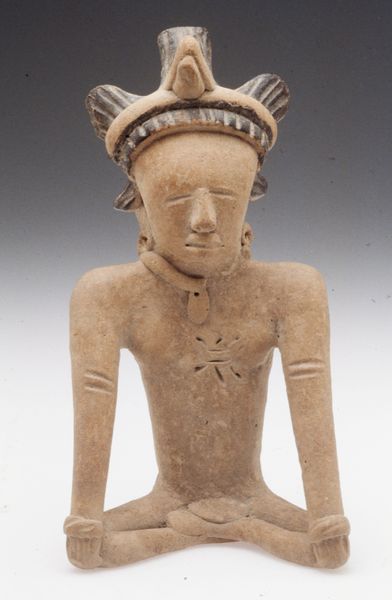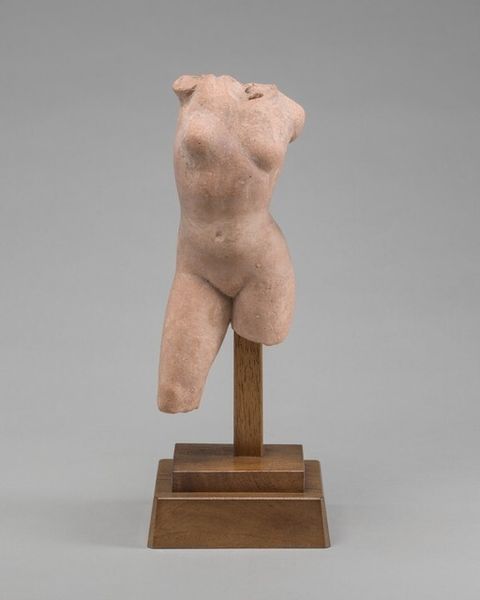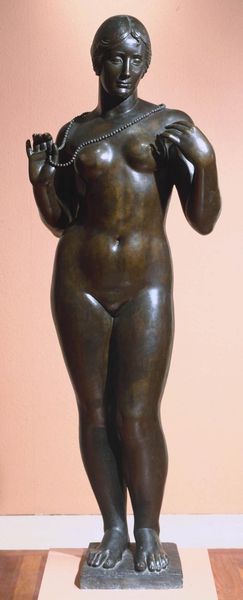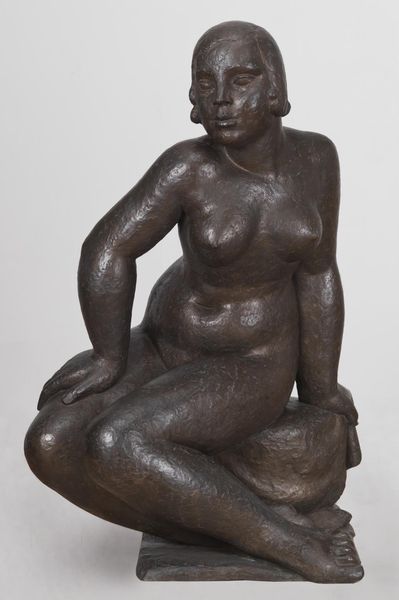
Dimensions: object: 533 x 305 x 279 mm
Copyright: © Bowness, Hepworth Estate | CC-BY-NC-ND 4.0 DEED, Photo: Tate
Editor: This is Barbara Hepworth's "Figure of a Woman," housed at the Tate Britain. The material looks like it's some kind of terracotta or stone. I'm struck by its simple, almost primal, form. What can you tell me about it? Curator: Consider the labour involved in extracting and shaping the raw material. How does the choice of this earthy medium influence our understanding of the female form? Think about Hepworth's interest in direct carving, emphasizing the artist's physical engagement with the material. How might this relate to broader social dialogues on labor and gender roles? Editor: That's fascinating! I never considered the act of creation in that way. Curator: Indeed, Hepworth's engagement with material reshapes our perspective.
Comments
tatebritain 6 months ago
⋮
http://www.tate.org.uk/art/artworks/hepworth-figure-of-a-woman-t00952
Join the conversation
Join millions of artists and users on Artera today and experience the ultimate creative platform.
tatebritain 6 months ago
⋮
Hepworth was one of a number of sculptors who returned to the handcraft of carving. The resulting immediacy of the artist’s relationship to her material was crucial. She described her process as an ‘effort to find a personal accord with the stones...I was fascinated by the kind of form that grew out of each sculpture, and by the kind of form that grew out of achieving a personal harmony with the material’.Like others, she sourced a wide range of indigenous British stones. This figure is made of Corsehill stone, a red sandstone quarried in Dumfriesshire. Gallery label, July 2007
